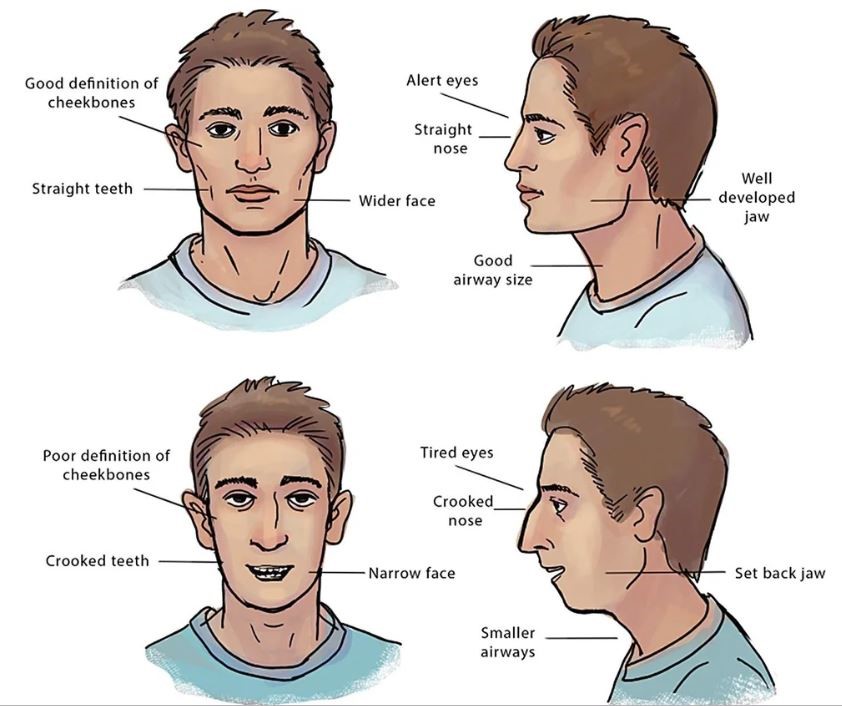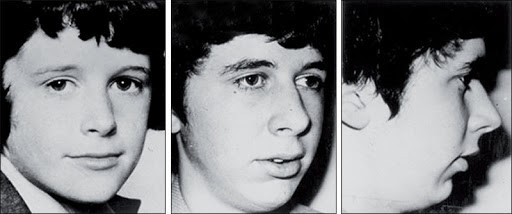Are you looking for answers to these important questions?
- Why is my child restless during sleep?
- Why does my child suffer from bedwetting?
- Why can't my child stay asleep all night?
- Why does my child snore?
- Why does my child sleep with his or her mouth open?
- Why does my child hold their head in front of the shoulders?
- Why does my child get frequent ear infections?
- Why does my child have asthma?
- Why does my child have allergies?
- Why does my child have frequent sore throats?
- Why does my child have bad breath?
- Why does my child have cavities so often?
- Why does my child have crooked teeth?
- Why does my child grind his or her teeth?
If you find yourself wondering about any of these crucial questions, your child may be developing poor oral habits that can lead to facial abnormalities and asymmetries.
KDCMyo can help create healthy, beautiful and stable results without surgery or extracting teeth. With early treatment with facial growth guidance orthodontics and myofunctional therapy, more aesthetic facial growth can lead to ideal development, better dental health, and better health and quality of life for you and your child.
Nine Common Signs of a Mouth Breather
- Snoring
- Sleep apnoea
- Lack of concentration
- Allergies
- Sinus problems
- Chronic sickness
- Swollen tonsils and adenoids
- “Allergic Shiners”- dark circles under the eyes
- Long face
Growth guidance orthodontic techniques can help children grow and develop to their full genetic potential by focusing on the big three: nasal breathing, lip seal, and proper tongue posture.
It is critical to your child’s proper facial growth, airway development and jaw joint health that the child consistently and exclusively breathes through the nose and maintains proper oral rest posture (lips together, tongue up, teeth together), and that all damaging myofunctional (oral and tongue) habits are eliminated.
Tongue position is largely responsible for the normal growth and development of the face and jaws. The tongue is a powerful muscle and should rest against the upper palate (roof of mouth) and cause the upper jaw to broaden and grow forward in a healthy and aesthetically appealing manner. When this does not happen, because of mouth breathing, open-mouth posture or tongue tie, the midface does not grow properly, and the lower face narrows and elongates.
Mouth breathing can also become a habit that remains once the obstruction is eliminated.
Normal facial growth and development is reliant upon proper nasal breathing, lip seal, and proper tongue posture.
Watch Dr Anne-Maree Cole's video about Facial Growth and Development and Working in Harmony with Nature – Dr Randi Green studies and trains under physiologic dentist, Dr Anne-Maree Cole at the Las Vegas Institute.
The Prevention of Sleep Apnea in children and adults. The answer may surprise you.
Our bodies working in harmony with nature. Physiologic dentistry looks to the root cause of malocclusion.
If you have time watch this one too. It's almost one hour long, but we think what Dr Cole says is too important to not share.
The causes of mouth breathing include:
- Allergies
- Chronic open mouth posture
- Myofunctional (tongue) habits
- Ankyloglossia (tongue tie)
- Frequents viral infections
- Enlarged tonsils and adenoids. This is a two way street. Unfiltered air from mouth breathing makes the tonsils and adenoids swell. Swollen tonsils and adenoids obstruct the nasal airway, leading to more mouth breathing.
- Pacifier use
- Thumb-sucking

Mouth breathing doesn’t look good, but more importantly, it can lead to:
- Facial feature defects including
- Long-face syndrome (elongated narrow face)
- Mid-face deficiency
- Recessed chin/jaw
- Sunken cheeks (cheekbones don’t develop fully)
- Small jaws without room for all the permanent teeth
- Sleep disordered breathing
- Attention Deficit Disorder
- Reduction in oxygen absorption
- Unfiltered air irritation of throat tissues and lungs
Not only do mouth breathing and poor oral rest posture cause changes in facial growth, they also impact the child’s long-term health because the jaws, palate and airway develop abnormally and can lead to:
- Future TMJ issues
- Current or future Obstructive Sleep Apnea
- Chronic illness due to fragmented sleep and body’s inability to properly rest and restore
- Headaches/shoulder & neck pain/poor posture

The photograph above shows a boy at the age of ten. He breathes through his nose and has a well-developed face. Everything is proportional and the boy has well-defined eyes, cheekbones, lips and chin. When he was 14, he got a gerbil and developed an allergy that left him with a stuffy nose, which caused him to start breathing through his mouth.
The photos in the middle and on the right show the same boy at the age of 17. Breathing through his mouth caused his face to grow downward instead of forward, making his face long and narrow. His nose looks larger and his chin is narrow because his upper and lower jaws did not grow forward. * Photos courtesy of Dr. John Mew
In some cases, more durable appliances are necessary to intervene with under developing jaws. Different types of fixed and removable expanders can be used to stimulate the production of new bone, and to model and shape existing bone. This expansion treatment enhances our ability to:
- Widen the upper palate
- Stimulate the upper jaw to grow forward
- Create space and allow teeth to move to proper position
- Decrease the need for future orthodontics if facial development problems are caught early and interceptive treatment is initiated
Mouth breathing, open mouth posture and tongue positioning habits are known to have a very destructive influence on a child’s developing face. Without the scaffolding effect of the tongue resting on the palate, the maxilla deforms in three dimensions and changes the shape of the lower half of the face, causing:
- mid-face deficiency
- elongated face
- narrow face
- larger appearing nose
- thin lips
- retracted lower jaw and chin
- increased chance of Temporal Mandibular Joint Disorder (TMD or TMJ)
- increased chance of clenching or grinding teeth
- increased chance of headaches
- increased chance of shoulder and neck pain
- increased chance of back problems
- increased chance of Obstructive Sleep Apnea (OSA)
Achieving proper tongue posture and function by proactively addressing mouth breathing requires addressing nasal and pharyngeal patency first. Once, nasal breathing and proper oral posture have been re-established, it is possible to reverse the facial defects that have begun to develop in the small child with the help of myofunctional exercises and soft appliances. These tools can be used to correct the trajectory of growth, and this can have dramatic effects on the face, jaw, and airway.
The bottom line is that you don’t have to wait to address orthodontic issues in children. We can intercept as early as a few months in babies with our appliances. Call us today for a consultation and remember it is never too early to get your child on the right track to normal facial development.
